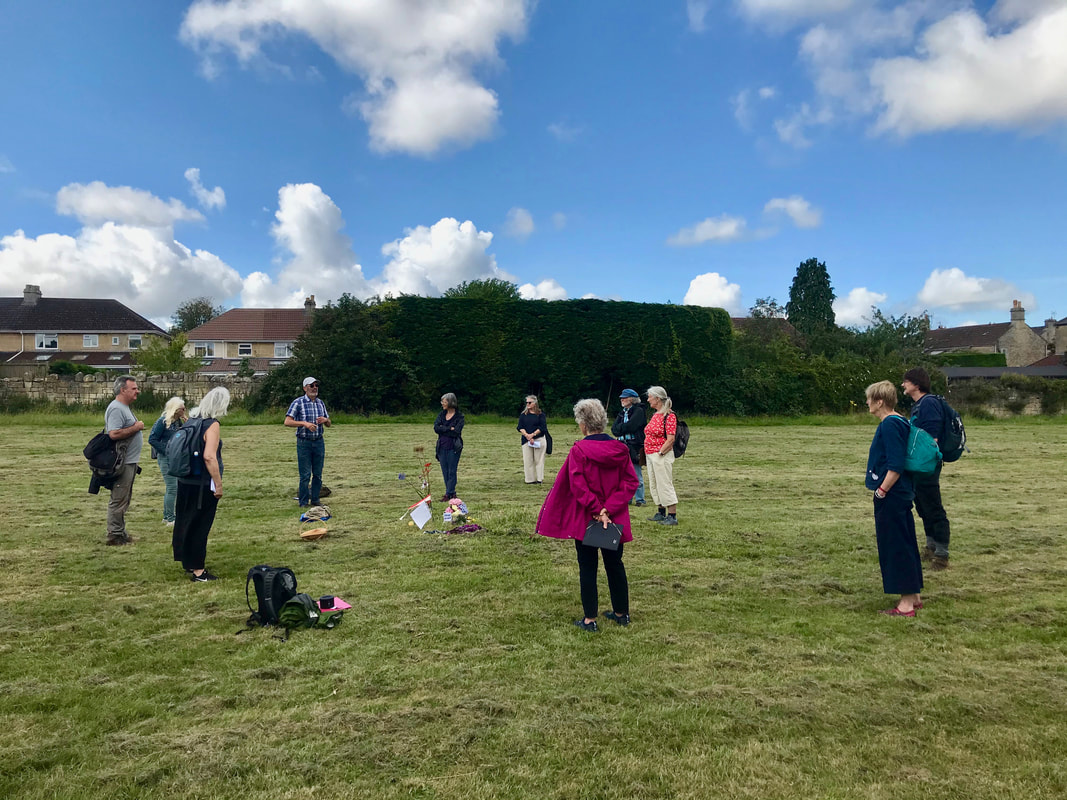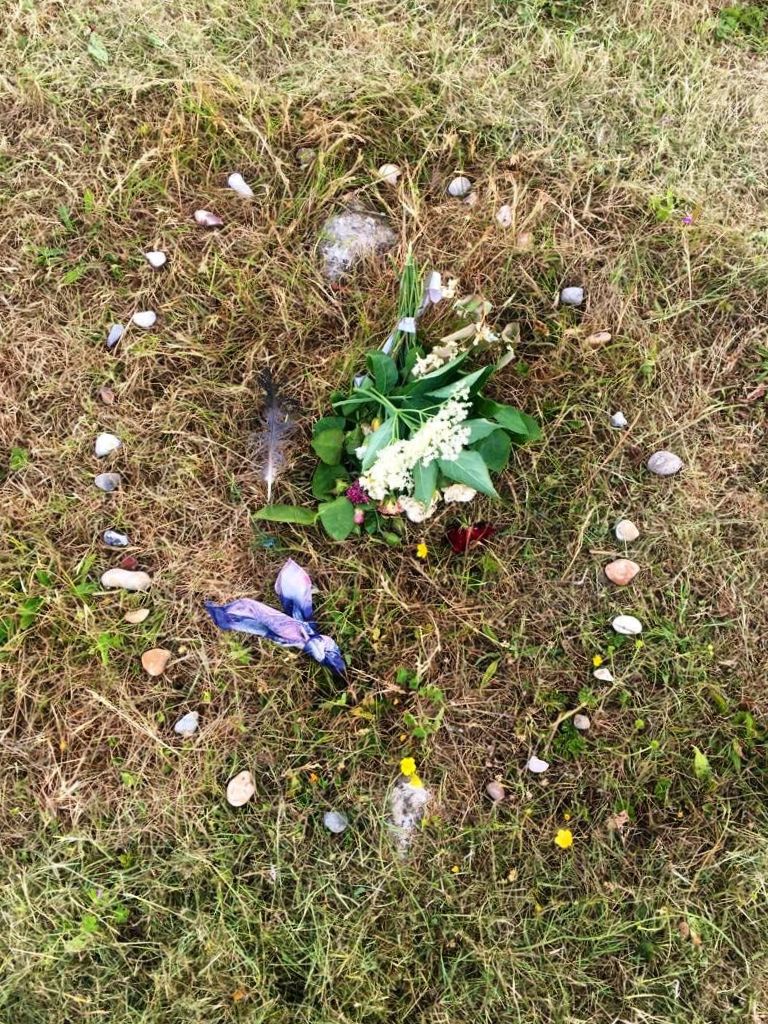|
Walking the Names continued through the (first?) lockdown, many walkers recorded and shared their readings. Readings came in from around Bath, Bristol and beyond; one regular came in from Denmark. As we now return to the burial ground itself those distant readings have continued. This is a short film using readings made on Bornholm Island in the Baltic mixed with a fragment from the reading on the burial ground at the beginning of August.
The project has generated widespread interest as well as local involvement. People have made contact who think they may have ancestors buried in the field, others have got involved responding to the virus death toll in the underfunded and part privatised care sector. It has been a focus to consider the responsibilities of civil society towards its elders and those who are finding life difficult as a result of illnesss, disability or just bad luck. In doing so questions of care, responsibility and memorialisation hang over the local authority and our elected representatives who inherited the burial site from the Poor Law Guardians and of course the Church who consecrated the ground. Ultimately such questions return to us, how to respond, how to bear witness, how to repair. We walk with these questions. Join us every first Sunday details here
0 Comments
For the past 10 months, every first Sunday of the month without fail, I have been hosting a group Walking the Names at the Bath Union Workhouse Burial ground. Each month to the toll of the Workhouse bell we have walked and read and reflected on a group of names from the burial register, reading them day by day and month by month of their burial. Each month and on our own walks we have honoured the space and respected the dead, leaving flowers, stones and flags at a ruined and almost erased memorial. A ‘poor’ memorial is emerging. Twice the council has shredded it. This artists project is about holding this space of reluctant civic memory open. Each month we have walked we have gathered at the remains of the demolished memorial. Some remember it as a ruined trough they used as ‘home’ in childhood tag games. Today just a few stones remain deeply embedded. It has become a special place, the start and finish point for each Walking the Names walk. Flowers often mark the place and over the months this has become an improvised memorial of wreaths made with found found flowers, small stones, flowers from walkers gardens, wild flowers and more recently flags with the names of the dead. Bath and North East Somerset Council shredded the memorial again at the end of July. Inherited over the years from the Poor Law Guardians, the Council still own the site. The Park department mow the grass, they mow it into nice shapes for other people using other parks in the city, leaving spaces for other lives and other plants to grow. Why cant they do that here? They blame the contractors for mowing up and down but it would not take much ink to write into the contract an instruction them to save their blades and mow round this evolving ‘poor’ memorial. They did it once. As well as the responsibility for maintaining the site the Council has inherited a responsibility for respecting the dead of this City. On the first Sunday in August we renewed the 'poor' memorial. As the virus constrained our activity, Walking the Names has continued, recording and sharing our reading and walking. Watch and listen to the lockdown recordings here. You will hear the names from batch burials of the elderly and the young, some who had lived to a great age carrying memories of family and stories perhaps from the Enclosures, others not even old enough to know their names. We walk and think about the brutal life of the poor deprived of access to land and lured to the city of Bath, we reflect on the contemporary resonances, those dying of the virus in the underfunded and privatised care homes of the twenty first century. Thinking about attitudes towards poverty and older people, the vulnerable and people with disabilities, people not considered to be economically productive and thus viewed as expendable in the pursuit of herd immunity. We talked about civic responsibility, about how one of the richest cities in the British Empire hid its poor and dumped their bodies in a field on the edge of town, and now cant even be bothered to respect a memorial. Here in the latter half of the Nineteenth century, throughout most of Queen Victoria’s reign, as the wealth of empire poured into England people were punished for being poor, even in their deaths. Over three thousand people are buried in unmarked graves on a patch of land not much bigger than a football pitch. The dead were brought from the Workhouse on a trolley following a path through a tunnel under the road to the field. The Workhouse ran a punitive regime of self sufficiency condemning the old and vulnerable, sick and disabled people to a miserable existence. Even in death the poor were denied a decent funeral, their bodies bundled into the earth behind the grim grey walls of the burial ground. Years ago the Council used to mow round the remains of the old memorial, then they removed the stones they could shift but their mower blades still chip away at old stones buried deep. In May they shredded the evolving ‘poor’ memorial, in a moving improvised ceremony a walker renewed it. In June and for most of July the ‘poor’ memorial found a life and began to grow. Sadly in August the Council scalped it again. On Sunday we renewed it and walked the names of those buried in 1871 and 1872. Leaving a flag for Henry Wilcox buried there on the 27 May 1871 just two days old and a flag for Jane Dunk buried there on 10 April 1871 eighty nine years old. So many local tragedies. Walking the Names continues, if you pass through the field leave your own bio-degradable flag or flower or stone and pay your respects to the Workhouse dead and their modern counterparts. Join us next time on Sunday 6 September. A ‘poor’ memorial emerges.
|
Archives
February 2024
Categories
All
|






 RSS Feed
RSS Feed